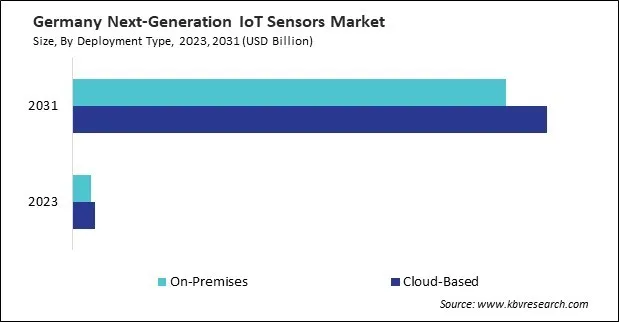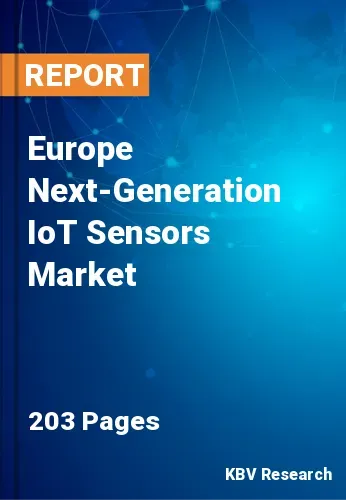The Europe Next-Generation IoT Sensors Market would witness market growth of 49.7% CAGR during the forecast period (2024-2031).
The Germany market dominated the Europe Next-Generation IoT Sensors Market by Country in 2023, and would continue to be a dominant market till 2031; thereby, achieving a market value of $4,416.4 million by 2031. The UK market is exhibiting a CAGR of 48.4% during (2024 - 2031). Additionally, The France market would experience a CAGR of 50.8% during (2024 - 2031).

The next-generation IoT sensors are emerging as the key enablers of this data-driven world, offering advanced capabilities critical for various applications, from industrial automation to smart cities, healthcare, automotive, and agriculture.
Moreover, one of the key growth drivers for the next-generation IoT sensors market is the rise of connected devices and the growing reliance on IoT in industrial automation. Manufacturing, agriculture, oil and gas, logistics, and utilities increasingly turn to IoT solutions to drive operational efficiency, improve worker safety, reduce downtime, and streamline processes
The demand for next-generation IoT sensors in Europe has surged as industries across the continent focus on automation, sustainability, and precision. The European Commission has allocated over €9.2 billion under its Digital Europe Programme for digital transformation and innovation from 2021 to 2027. This funding is directed towards manufacturing, automotive, aerospace, and food processing sectors, which increasingly rely on highly accurate and dependable IoT sensors to enhance automation, improve quality control, and ensure safety. The strong emphasis on digitalization and smart technologies in these industries is accelerating the adoption of IoT sensors across Europe, contributing to regional market expansion.
Free Valuable Insights: The Global Next-Generation IoT Sensors Market will Hit USD 66.14 billion by 2031, at a CAGR of 50.2%
Based on Power Source, the market is segmented into Battery-Powered Sensors, Energy-Harvesting Sensors, and Plugged-In Sensors. Based on Connectivity, the market is segmented into Wi-Fi, Bluetooth, ZigBee, LPWAN, and 5G & Other. Based on Sensor Type, the market is segmented into Temperature Sensors, Pressure Sensors, Motion Sensors, Proximity Sensors, Image Sensors, and Other Sensor Type. Based on Deployment Type, the market is segmented into Cloud-Based and On-Premises. Based on Technology, the market is segmented into MEMS (Micro-Electro-Mechanical Systems), CMOS (Complementary Metal-Oxide-Semiconductor), NEMS (Nano-Electro-Mechanical Systems), RFID (Radio Frequency Identification), and Other Technology. Based on End-Use, the market is segmented into Healthcare, Automotive, Manufacturing & Industrial, Energy & Utilities, Consumer Electronics, Transportation & Logistics, and Retail & Other. Based on countries, the market is segmented into Germany, UK, France, Russia, Spain, Italy, and Rest of Europe.

By Power Source
By Connectivity
By Sensor Type
By Deployment Type
By Technology
By End-Use
By Country
Our team of dedicated experts can provide you with attractive expansion opportunities for your business.

